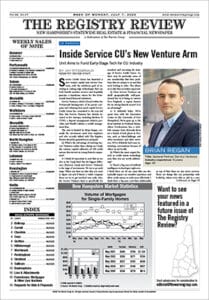Interest rates on residential mortgages and consumer banking accounts will likely see little movement in response to the Federal Reserve’s decision Wednesday to cut its benchmark interest rate by 25 basis points.
The cuts are intended to counter the impact of President Donald Trump’s trade wars, stubbornly low inflation and global weakness, Fed Chair Jerome Powell said.
The central bank reduced its benchmark rate – which affects many loans for households and businesses – by a quarter-percentage point to a range of 2 percent to 2.25 percent. It’s the first rate cut since December 2008 during the depths of the Great Recession, when the Fed slashed its rate to a record low near zero and kept it there until 2015. The economy is far healthier now despite risks to what’s become the longest expansion on record.
The impact of the Fed’s decision will be muted when it comes to consumer rates, unless there are more cuts ahead, said Tendayi Kapfidze, chief economist at LendingTree.
Mortgage rates and savings rates were already historically quite low. And credit card companies are less inclined to lower rates in response to a Fed move than to raise them, especially when the move was so modest.
All the same, Kapfidze said there are still opportunities for consumers, as each institution will make adjustments in different magnitudes.
“With such a small cut, there will not be a lot of competitive pressure to move consumer rates, so this is a classic case of ‘the squeaky wheel gets the grease,’” he said.
In addition to its rate cut, the Fed also announced that it would stop shrinking its enormous bond portfolio in August, two months earlier than planned. This step is intended to avoid putting upward pressure on long-term borrowing rates. The Fed had aggressively bought Treasury and mortgage bonds after the financial crisis to drive down long-term rates but had been gradually shrinking its balance sheet as the economy strengthened.
Greg McBride, chief financial analyst at Bankrate, said there would likely be limited impact of the Fed’s moves on household finances.
Credit cards and home equity lines of credit do move in step with the Fed’s actions so rates will drop slightly, but with some delay. And it does little to offset recent increases.
“So the good news is it may go down a quarter of a point, but you are still up 2 percent from a year ago,” he said.
And while some high yield online savings accounts may nudge down slightly, the national average for interest rates on savings account has stayed stubbornly close to zero over the past decade, despite numerous rate hikes.
In a press conference following the decision, Powell left open the possibility of future rate cuts, but perhaps not as many as Wall Street had been hoping for. However, Powell struggled to find just the right words to articulate the Fed’s strategy and what might prompt future rate cuts at a time when the risk of a recession in the United States seems relatively low, but stressed the Fed is worried about the consequences of Trump’s trade war and sluggish economies overseas.
“Weak global growth and trade tensions are having an effect on the U.S. economy,” he said.
Powell also said that sluggishness in some sectors of the U.S. economy, like manufacturing, along with inflation chronically below the Fed’s target level justify the “insurance of a rate cut now.”
The Fed’s action Wednesday was approved 8-2 vote, with two dissents: Esther George, president of the Fed’s Kansas City regional bank, and Eric Rosengren, head of the Boston Fed, wanted to keep rates unchanged. It was the first time there have been as many as two dissents since December 2017 and suggested that Powell may face opposition if he seeks further rate cuts this year.


